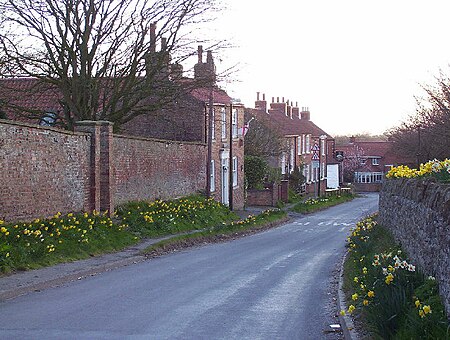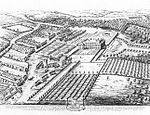Goodmanham

Goodmanham (historically Godmundingaham, the home of the people of Godmund mentioned in the year 627 in Bede's Historia ecclesiastica gentis Anglorum ) is a small village and civil parish in the East Riding of Yorkshire, England. It is situated approximately 2 miles (3 km) to the north-east of Market Weighton. The village is situated on the Yorkshire Wolds Way National Trail, a long-distance footpath. According to the 2011 UK Census, Goodmanham parish had a population of 244, an increase on the 2001 UK Census figure of 218.The village is built in a favourable position on a south-facing slope of the Yorkshire Wolds between two streams. It has a copious supply of water from numerous springs and naturally occurring limestone for building. The land is extraordinarily fertile in this region and people have lived here since prehistoric times.
Excerpt from the Wikipedia article Goodmanham (License: CC BY-SA 3.0, Authors, Images).Goodmanham
Wateringdyke Lane,
Geographical coordinates (GPS) Address Nearby Places Show on map
Geographical coordinates (GPS)
| Latitude | Longitude |
|---|---|
| N 53.876802 ° | E -0.648794 ° |
Address
Wateringdyke Lane
YO43 3JB , Goodmanham
England, United Kingdom
Open on Google Maps









